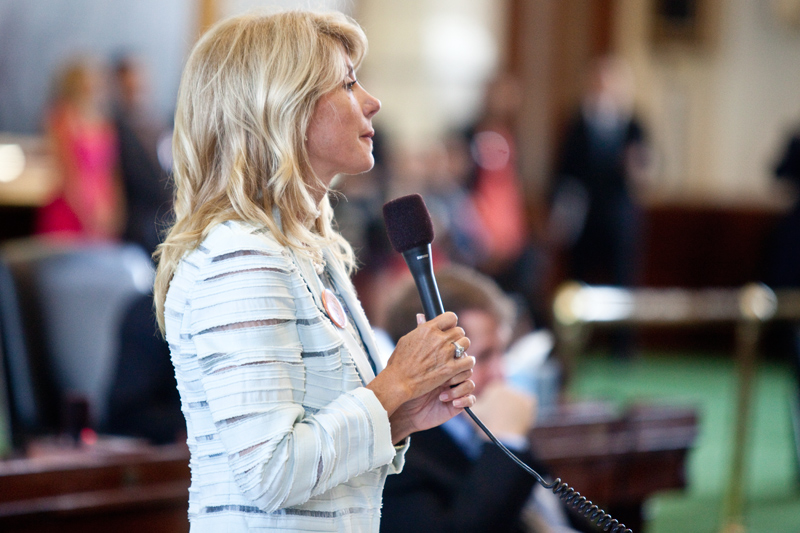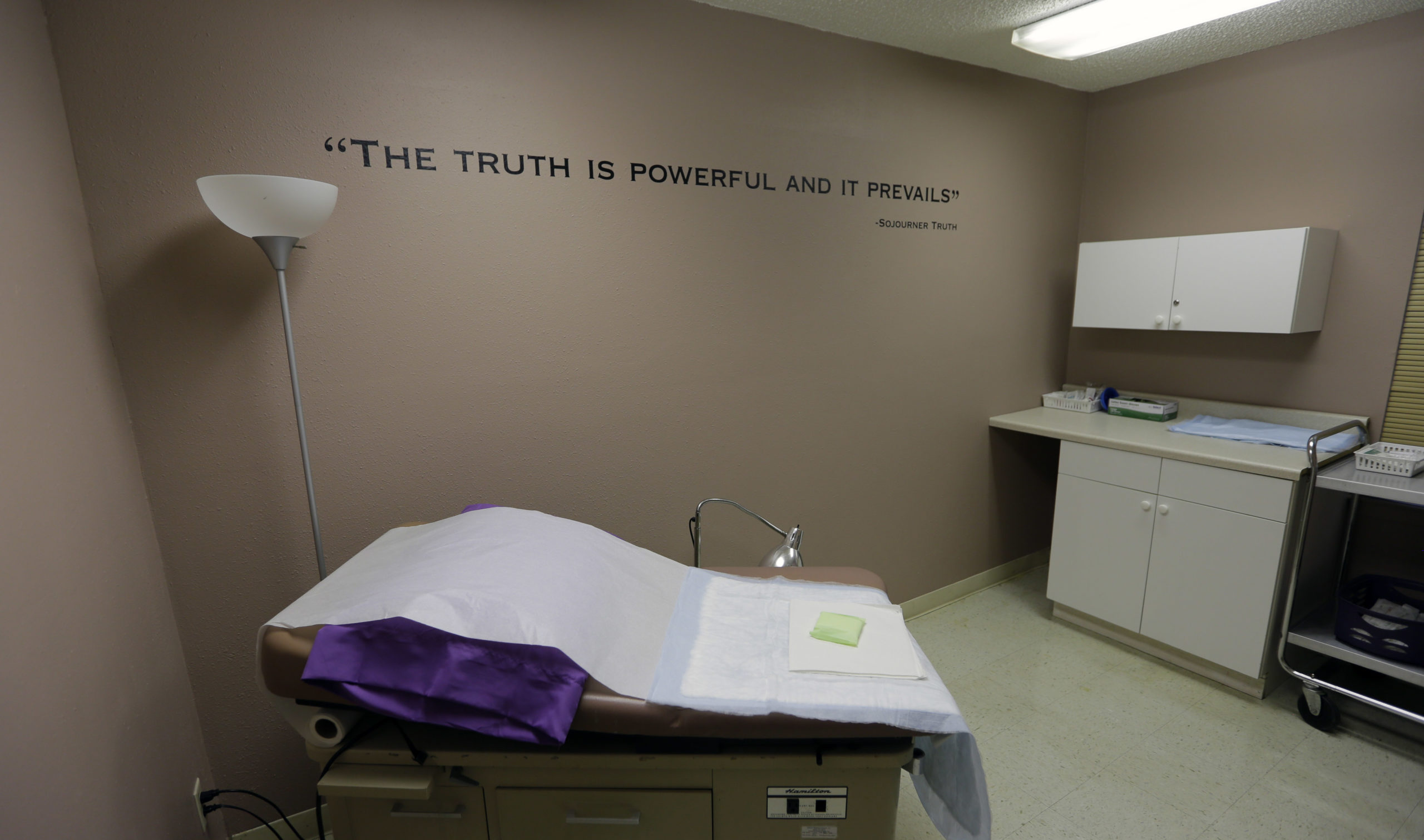
Just Six Clinics Likely to Survive Abortion Bill’s Final Restrictions
Above: Sen. Wendy Davis during her 2013 filibuster.
Many times, the rationale for passing a piece of legislation includes hard numbers: This many dollars will buy that many school lunches; expanding this program will prevent that many infections. Other times, the reasons offered are soft and subjective, more a feeling than a data point, like freedom, safety or health. House Bill 2, the anti-abortion omnibus bill passed by the Texas Legislature just over a year ago, fell into the latter category.
In 2011, Texas had 44 clinics that performed abortions. Today it has around 20. Come September: six.
Yet the impact of the law can be summarized with one very hard number: six. That’s how many abortion clinics are expected to survive the last of HB 2’s restrictions, which go into effect on Sept. 1. They require all facilities that perform abortions—even if they only distribute a pill to be taken at home—to have an on-site ambulatory surgical center with wide hallways and rooms of a certain size. Most abortion clinics can’t afford to move or make the structural renovations to meet these standards and will close by Sept. 1, if they haven’t already. In 2011, Texas had 44 clinics that performed abortions. Today it has around 20. Come September: six.
The bill’s three other restrictions went into effect in November 2013. One was a ban on abortions after 20 weeks’ gestation, except to save the life of the mother or in the case of severe fetal anomalies. Such procedures were already rare—they make up less than 1 percent of abortions—but are often sought by especially vulnerable populations such as rape victims who’ve been in denial about their pregnancies. (The ban has no exception for rape.) Another requirement was that women make three separate clinic trips to receive a medical (pill-based) abortion—two for each dose of the medication and one for a follow-up visit. Combined with anti-abortion legislation passed in 2011, which added a mandatory ultrasound and 24-hour waiting period, getting a medical abortion now takes four office visits. Medical abortion was also limited to pregnancies of seven weeks or less. Finally, doctors performing abortions were required to have admitting privileges at a hospital within 30 miles of the clinic, even though hospital transfers are extremely rare and hospitals have to admit and treat patients regardless of a doctor’s status.
Whatever the reasoning given for anti-abortion legislation, it certainly has impact. A recent study found that the restrictions passed in 2011 have reduced abortions in Texas by 13 percent, including a dramatic drop in the use of medical abortions. As HB 2 takes full effect, to the benefit of women’s health and safety or not, legal abortion in Texas is likely to continue its decline.


